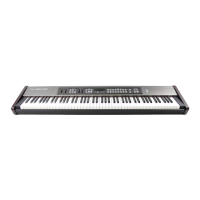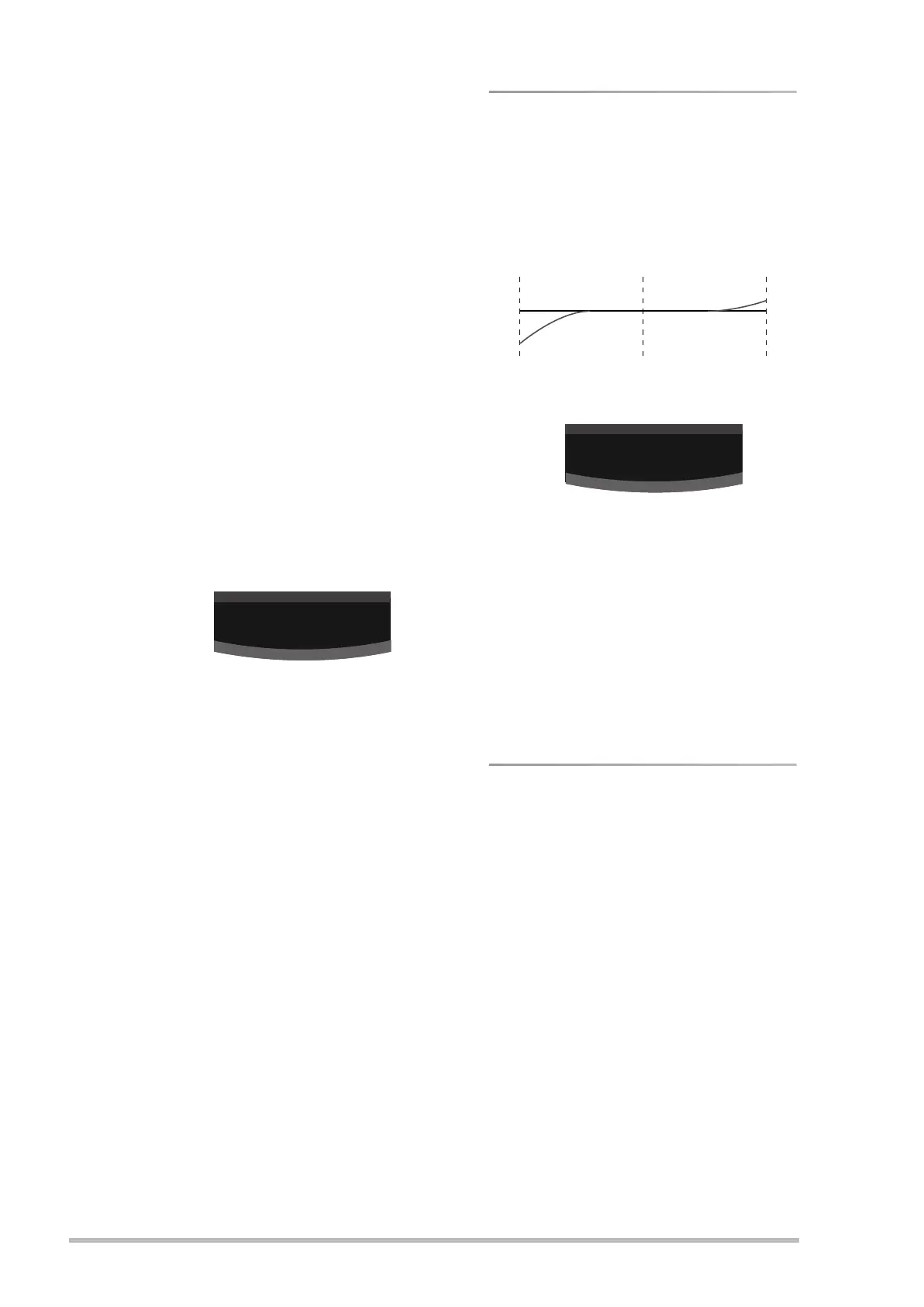RD-170
System parameters
30
r
maj (Just major): A tuning which resolved the
ambiguity of fifths and thirds. Quite beautiful
sonorities are produced with chords, but the
scale is unbalanced, so it is not well-suited for
melodies.
min (Just minor): This is a Just scale for playing
pieces in minor keys.
mnt (Mean Tone): A temperament that adds
some compromises to Just temperament and
facilitates transposition.
Uer (Werckmeister): A combination of the
Mean Tone and Pythagorean temperaments,
this tuning allows for playing in any key.
kir (Kirnberger): As a result of improvements
made to the Mean Tone and Just tempera-
ments, it is relatively tolerant towards transpo-
sition and can be used to play in all keys.
Skip to step (5) below if you do not need to set
the root note.
●
Specifying the root note
When you play using a tuning other than Equal
Temperament, you need to specify the root/
fundamental (“C” for major and “A” for minor)
according to the key of the song to be played.
(3) Press [SYSTEM] (lights), followed by [3].
Press and hold [3] to display the abbreviated
function name.
(4) Use [DEC÷NO]/[INC÷YES] to select the desired
root note (C~B).
Note: This setting can be saved (see p. 32).
(5) Press [EXIT] to leave the System mode.
Stretch Tuning
“Stretch Tuning” is a tuning method specific to
pianos. The pitch of a piano is generally tuned lower
in the bass and higher in the treble compared with
equal temperament. This is done because low notes,
when tuned right, sound a little sharp, while treble
notes sound flat. By changing the tuning curve, the
chords will sound subtly different.
(1) Press [SYSTEM] (lights), followed by [4].
Press and hold [4] to display the abbreviated
function name.
(2) Use [DEC÷NO]/[INC÷YES] to select on or off.
off refers to the standard tuning curve, which
is suitable for playing in Layer mode or with
other instruments.
on refers to the tuning curve that stretches the
bass and treble. This is suitable for piano solos.
Note: This setting can be saved (see p. 32).
(3) Press [EXIT] to leave the System mode.
Note: Stretch Tuning only applies to “Piano” Tones.
Pedal detection
You can connect either a footswitch (DP-2, etc.) or
an expression pedal (EV-7, etc.) to the RD-170’s
SOFT/EXPR. socket and specify its function for the
Upper and Lower parts separately (see p. 22).
The RD-170 is smart enough to recognize whether
you are using a footswitch or an expression pedal.
(You cannot use both simultaneously, so don’t try to
solder the cable wires together or using a multi-
input connection box.) There may be times when
you select a Setup memory (see p. 28) that assigns
the Soft function to the Upper part, for example,
while an EV-5 expression pedal is connected to the
SOFT/EXPR. socket.
If pedal detection is on, the RD-170 behaves
smartly: if you connect the “wrong” kind of perfor-
mance controller to the SOFT/EXPR. socket (an
expression pedal rather than a footswitch, for
example), you can control the Upper Part’s expres-
sion level.
If pedal detection is off, the RD-170 becomes
downright clever: if Upper is set to respond to Soft
messages (on/off), while you connected an expres-
e
rOOt nOte
OffOff
On
On
Bass register Treble registerA4
on
Stretch tunin9
RD-170 OM_GB Page 30 Monday, March 17, 2003 10:23 AM

